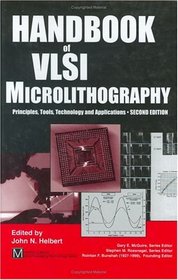Search -
Handbook of VLSI Micrelithography
Handbook of VLSI Micrelithography
This handbook gives readers a close look at the entire technology of printing very high resolution and high density integrated circuit (IC) patterns into thin resist process pattern transfer coatings -- including optical lithography, electron-beam, ion-beam, and X-ray lithography. The book's main theme is the special printing process needed to a... more »
This handbook gives readers a close look at the entire technology of printing very high resolution and high density integrated circuit (IC) patterns into thin resist process pattern transfer coatings -- including optical lithography, electron-beam, ion-beam, and X-ray lithography. The book's main theme is the special printing process needed to a... more »
ISBN-13: 9780815514442
ISBN-10: 0815514441
Publication Date: 4/15/2001
Pages: 995
Edition: 2
Rating: ?
ISBN-10: 0815514441
Publication Date: 4/15/2001
Pages: 995
Edition: 2
Rating: ?
0 stars, based on 0 rating
Genres:
- Computers & Technology >> Graphics & Design >> Printing
- Electrical & Optical >> Circuits >> VLSI & ULSI
- Electrical & Optical >> Semiconductors




